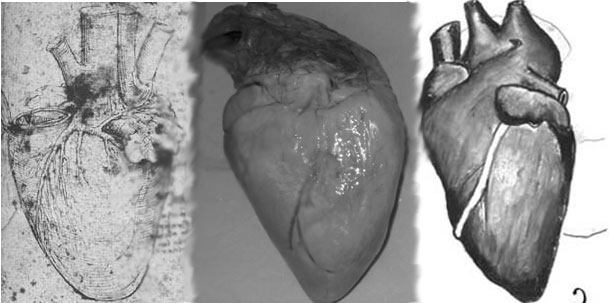

By Emerson Sykes, Tim Kane and Chris Ralli
 |
Leonardo da Vinci is well known for his varied interests, experiences and his endless curiosity. However, his anatomical studies are unlike his famous paintings, of which there is direct physical evidence, and his engineering plans, both architectural and mechanical, few of which historians believe were ever executed. The anatomical studies in his notebooks are particularly interesting because they represent explorations that he actually undertook but of which there is no remaining direct evidence. There is an ongoing debate as to what extent Leonardo’s anatomical studies were meant to aid his painting. While it seems likely that many of his mycological studies had direct relationships with his depictions of humans and animals, it is difficult to imagine how learning about the internal organs would have helped his art. Thus, studies such as the one he did of a pig’s heart are fascinating because they are examples of Leonardo’s thirst for knowledge simply for knowledge’s sake. Finally, Leonardo’s entries in his notebooks regarding his dissection of a heart are themselves worth studying for two reasons. First, Leonardo pioneered the technique of drawing anatomical diagrams and second, there is a clear difference between what one sees during a dissection and what Leonardo sketched. Potential reasons for this dichotomy include simplification for clearer explanations of the dissection, insufficient drawing techniques to depict inner body parts accurately, and plain guesswork as to what was actually going on inside the heart. For all of the above reasons, we chose to recreate a da Vinci dissection of a pig’s heart to see exactly what Leonardo saw and then compare it with our own sketches and Leonardo’s. |